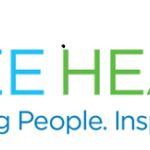

 Western society is, to a large degree driven by technological advance. The societal accomplishments are measured by our success in applying scientific knowledge to practical forms which appear to improve the quality of our lives. Perhaps nowhere is such advancement more apparent and dramatic than in the medical profession. Following the introduction of antibiotics in the last century, the pace of medical advance accelerated with quantum leaps in imaging, transplantation, minimally invasive interventions and medications. Heart disease, as the leading killer of men and women in this country has certainly attracted its share of medical marvels. However, as is so often the case when progress accelerates, human experience must confront the thorny issue of whether we are driving progress or progress is driving us. To frame the issue more directly, just because we, as a group or profession or society can do something, this does not necessarily mean that we must, or even should do it. The question, although perhaps philosophic, has direct and very practical ramifications, and it is in just this realm of uncertainty that research can help to provide answers.
Western society is, to a large degree driven by technological advance. The societal accomplishments are measured by our success in applying scientific knowledge to practical forms which appear to improve the quality of our lives. Perhaps nowhere is such advancement more apparent and dramatic than in the medical profession. Following the introduction of antibiotics in the last century, the pace of medical advance accelerated with quantum leaps in imaging, transplantation, minimally invasive interventions and medications. Heart disease, as the leading killer of men and women in this country has certainly attracted its share of medical marvels. However, as is so often the case when progress accelerates, human experience must confront the thorny issue of whether we are driving progress or progress is driving us. To frame the issue more directly, just because we, as a group or profession or society can do something, this does not necessarily mean that we must, or even should do it. The question, although perhaps philosophic, has direct and very practical ramifications, and it is in just this realm of uncertainty that research can help to provide answers.
Cardiac imaging serves as an interesting case in point. CT scanning changed our ability to image the human body with comprehensive cross-sectional images that were computer generated and transmitted. Advances in acquisition speed, gating to the heart rate, resolution and analysis have enabled us to image the human heart, complete with the coronary arteries virtually in three dimensions. Addition of contrast material enables us to look both at the lumen of the vessels (the only thing that can be accomplished by the now traditional “gold standard” test for coronary artery disease, the coronary angiogram), and the vessel wall itself. Since scientific research has demonstrated that atherosclerosis, the disease process causing coronary artery disease, is an inflammatory disease of the vessel wall, this imaging modality has the potential to tell us more about the process of disease than was previously possible. A concurrent advance in echocardiography has enabled us to place a tiny echo camera at the tip of an angiocatheter not much thicker than a sewing needle which can look at the coronary arteries from the inside. Similarly, advances in magnetic resonance imaging enable us to use the energy released from water molecules when they are placed in powerful rapidly shifting magnetic fields to create images of any cell in the body, including the human heart, complete with its blood vessels.
CT scans are improving in their ability to image the coronary arteries, but they still dont do quite as well as traditional angiography for imaging the entire vessel lumen. Yet they carry much more information regarding the vessel wall and the heart muscle function. They are noninvasive, but expose the patient to a significant amount of radiation, a very important consideration if one intends to subject the patient to repeat testing. IVUS (intravascular ultrasound) generates very useful information about both the vessel lumen and the vessel wall, but obviously requires the invasive procedure of placing the catheter into the coronary arteries. MRI has neither of these problems, but does not yet have the special resolution to clearly decipher coronary pathology. And let us not forget, that all of these procedures come with a considerable price tagone that neither the profession nor the society can ignore when we are speaking about a disease that will affect nearly one quarter of the population over the course of their lifetime. Enter the role of research. It is the job of the research community not only to discover new advances, but also to determine through clinical investigation, the most appropriate specific role for such advancesnot only when such advances could be used, but when, most appropriately, they shouldand should not be used. It sounds appealing to be able to gather maximal information on every patient. However, all information comes at a pricenot only financial, but clinical as well. Aside for the very real clinical concerns for radiation exposure and complications of invasive procedures, false positive information (no test is perfect) may lead to further unnecessary testing and procedures, to say nothing of unwarranted patient worry and concern. In short, it is only through continued clinical research that we will begin to be able to answer the challenging questions of how best to reap the benefits and minimize the risks of the bold technological advances that we continue to make.
Post Views: 868
 Western society is, to a large degree driven by technological advance. The societal accomplishments are measured by our success in applying scientific knowledge to practical forms which appear to improve the quality of our lives. Perhaps nowhere is such advancement more apparent and dramatic than in the medical profession. Following the introduction of antibiotics in the last century, the pace of medical advance accelerated with quantum leaps in imaging, transplantation, minimally invasive interventions and medications. Heart disease, as the leading killer of men and women in this country has certainly attracted its share of medical marvels. However, as is so often the case when progress accelerates, human experience must confront the thorny issue of whether we are driving progress or progress is driving us. To frame the issue more directly, just because we, as a group or profession or society can do something, this does not necessarily mean that we must, or even should do it. The question, although perhaps philosophic, has direct and very practical ramifications, and it is in just this realm of uncertainty that research can help to provide answers.
Western society is, to a large degree driven by technological advance. The societal accomplishments are measured by our success in applying scientific knowledge to practical forms which appear to improve the quality of our lives. Perhaps nowhere is such advancement more apparent and dramatic than in the medical profession. Following the introduction of antibiotics in the last century, the pace of medical advance accelerated with quantum leaps in imaging, transplantation, minimally invasive interventions and medications. Heart disease, as the leading killer of men and women in this country has certainly attracted its share of medical marvels. However, as is so often the case when progress accelerates, human experience must confront the thorny issue of whether we are driving progress or progress is driving us. To frame the issue more directly, just because we, as a group or profession or society can do something, this does not necessarily mean that we must, or even should do it. The question, although perhaps philosophic, has direct and very practical ramifications, and it is in just this realm of uncertainty that research can help to provide answers. 























